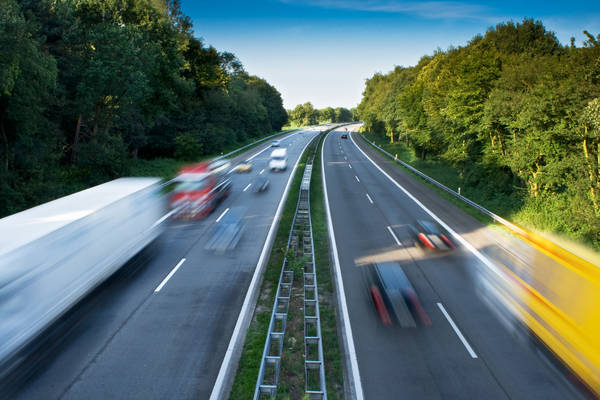The new decade has definitely brought with it some new challenges, such as restrictions on transport. The most considerable emission reductions have taken place in the road transport sector, which comprises up to 43%(1 of the total reduction in emissions. In addition, there has been a noticeable decrease in air traffic as people have travelled less due to the closure of international borders.
The energy generation and industrial sectors have seen the second largest reduction in emissions - over 40% - as a result of the dwindling economy. According to the article published by Nature Climate Change in May, annual global emissions will be reduced as a result of the pandemic by 4-7%, depending on the rate at which the economy recovers.
This temporary reduction is not enough to help us reach the 1.5C climate target. Reaching this goal would require a 7.6%(2 decrease in annual emissions for at least the next 30 years.

The most considerable emission reductions have taken place in the road transport sector globally during the pandemic this year.
These figures indicate that, even though they are important, the personal decisions we make are not enough. We need to make more comprehensive changes to our society, not just when we are forced to by a crisis, but through conscious choices.
The pandemic has also made us question how much we consume. Successful video conferences and revitalising staycations will hopefully make us realise that, even after the crisis, we can significantly reduce travel without compromising our quality of life.
We should make conscious choices, particularly concerning energy and materials. We need energy that is not dependent on fossil-based raw materials, as well as a comprehensive shift in how we use and recycle materials.
Plastics can be used in the fight against climate change
As the first half of this year has clearly demonstrated, small changes and emission reductions alone are no longer enough in striving for the 1.5C climate target set by the IPCC. The bioeconomy and circular economy play a key role in reaching the climate target, and they are symbiotic when successfully implemented.
One example of how the bioeconomy and circular economy can be combined to take action against climate change is through plastic, despite the overwhelming amount of negative attention it has received.
Plastic is a suitable raw material for many products, and it has many benefits, especially when used in food packaging thanks to its air impermeability and lightweight nature. Both of these properties reduce the amount of emissions in the atmosphere by reducing food waste and transport emissions. Unfortunately these same properties mean that plastic becomes problematic when it ends up in nature. However, biodegradable plastic should not end up in nature either, because it needs certain environmental conditions in order to degrade.

Wood-based UPM BioVerno naphtha has been used as a raw material for plastics in the packaging industry and, for example, UPM Raflatac Forest Film label material is made from it.
According to the circular economy model, materials should stay in circulation for as long as possible, after which they should be recovered for energy. The materials that leave circulation have to be replaced and this is where renewable raw materials come into play. During their growth, bio-based raw materials bind carbon dioxide from the atmosphere, which remains in the product throughout its lifecycle, until it is utilized in the production of bioenergy.
According to the Market Data 2019(3 report by Plastics Europe, a total of 359 million tonnes of plastic was produced globally in 2018. This is equivalent to approximately 7180 billion half-litre PET plastic bottles, which would cover over 3.6 million football fields if laid in rows. If all plastics produced during the year had been made from bio-based raw materials instead of fossil-based materials, the amount of carbon bound would correspond to approximately 1 billion tonnes of carbon dioxide(4, which is approximately 3% of the annual CO2 emissions reported by the International Energy Agency for 2019(5. Bio-based raw materials bind carbon dioxide from the atmosphere and help us avoid the use of fossil-based raw materials.
A prerequisite for the use of bio-based raw materials is sustainable land use, and one important factor in using land sustainably is taking care of biodiversity. The destruction of biodiversity as a result of climate change could be considered as one of our greatest climate-related losses, or we could think of the conservation of biodiversity as our greatest target.
1)https://www.nature.com/articles/s41558-020-0797-x
2)https://grist.org/climate/the-world-is-on-lockdown-so-where-are-all-the-carbon-emissions-coming-from/
3)https://www.plasticseurope.org/application/files/1115/7236/4388/FINAL_web_version_Plastics_the_facts2019_14102019.pdf
4)This calculation is based on an estimate in which 80% of plastic consists of carbon, and the weight of carbon is 27% of the weight of a CO2 molecule. The calculation has only taken the carbon bound in the plastic into consideration and does not factor in the emissions caused by its production.
5)This estimate is based on the International Energy Agency’s annual emission figures for 2019 (https://www.iea.org/articles/global-co2-emissions-in-2019).